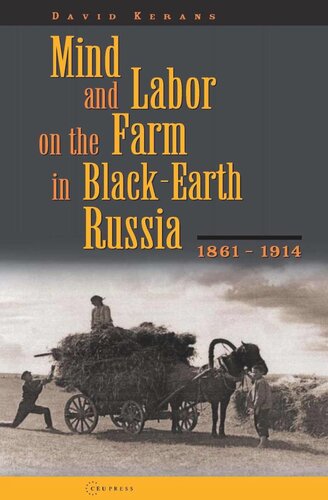

Most ebook files are in PDF format, so you can easily read them using various software such as Foxit Reader or directly on the Google Chrome browser.
Some ebook files are released by publishers in other formats such as .awz, .mobi, .epub, .fb2, etc. You may need to install specific software to read these formats on mobile/PC, such as Calibre.
Please read the tutorial at this link: https://ebookbell.com/faq
We offer FREE conversion to the popular formats you request; however, this may take some time. Therefore, right after payment, please email us, and we will try to provide the service as quickly as possible.
For some exceptional file formats or broken links (if any), please refrain from opening any disputes. Instead, email us first, and we will try to assist within a maximum of 6 hours.
EbookBell Team

0.0
0 reviewsDid Tsarist Russia's political and industrial backwardness result from its rigid and archaic agrarian structure? Did the Russian revolution stem in large part from a parasitical elite's exploitation of an enormous peasant class? Was the Russian peasantry itself backward and 'dark' as a result? The attention contemporaries and historians have lavished on these questions has enshrined them as fundamental issues in Russian history. This text endeavours to recast our understanding of the agrarian problem by uncovering the history of both the physical and mental dimensions of agriculture. Employing literary, agronomic and statistical information on peasant labour and culture, this book also offers new perspectives on the limitations of traditional agriculture to adapt to a rapidly changing economic geography, such as that of late nineteenth and early twentieth century Russia. By taking a ground level view of the evolution of Russian agricultural technique, the author arrives at a very different understanding of the agrarian problem. The book identifies both the achievements and limitations of peasant farmers in adapting farming practices to the economic and technological challenges of the half century preceding the revolution. Most importantly, the book delves deeply into peasant life and culture to demonstrate how and why farming imrovements did not pass determinable levels.